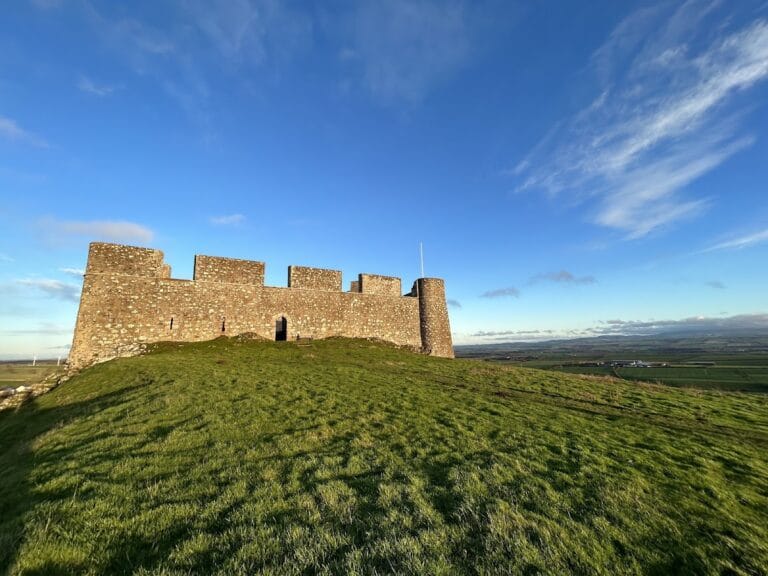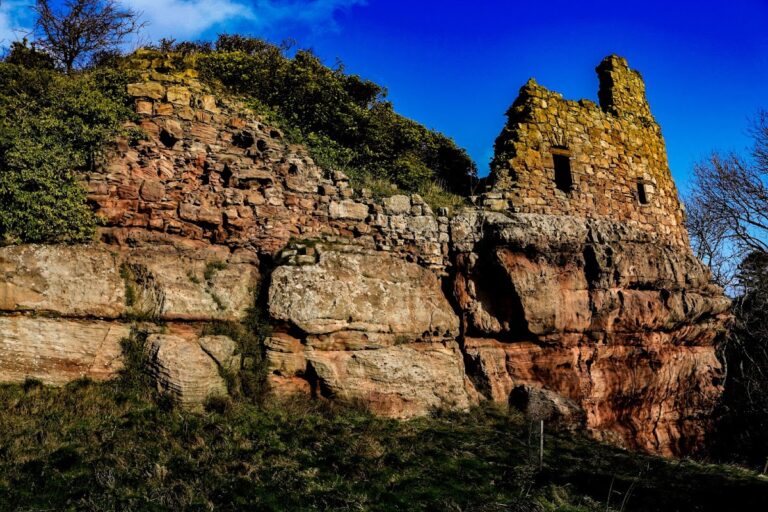Duns Castle: A Historic Norman Stronghold in Scotland
Visitor Information
Google Rating: 4.4
Popularity: Low
Google Maps: View on Google Maps
Official Website: www.dunscastle.co.uk
Country: United Kingdom
Civilization: Unclassified
Remains: Military
History
Duns Castle is located in the town of Duns, Scotland, and was originally built by the Norman civilization. Its earliest part, a large fortified tower known as a Pele Tower or Norman keep, dates back to approximately 1320. This stronghold was constructed on lands granted by King Robert the Bruce to Thomas Randolph, the 1st Earl of Moray, reflecting the castle’s origins within the period of Scotland’s medieval noble estates.
Following Thomas Randolph’s death in 1332, the ownership of the castle is thought to have passed to Patrick Dunbar, the 9th Earl of March. However, after the Scottish defeat at the Battle of Halidon Hill in 1333, the English king Edward III granted the manor and castle to Thomas de Bradestan, marking a temporary change of control during the Wars of Scottish Independence. Over the centuries, Duns Castle changed hands multiple times, reflecting the turbulent history and shifting political allegiance of the border region.
In 1639, during the First Bishops’ War—a conflict about the governance of the Church of Scotland—the castle served an important military purpose. It was used as the headquarters for General Alexander Leslie, commander of a Scottish army that encamped nearby to prevent English forces from advancing. This military standoff helped lead to negotiations resulting in the Pacification of Berwick, which ended the hostilities.
The estate found more stable ownership in later years. In 1670, Sir James Cockburn acquired the property, and in 1698 it was sold to William Hay of Drumelzier. The Hay family, descendants of John Hay, 1st Earl of Tweeddale, has maintained possession since that time, carrying forward the castle’s legacy through centuries of remodeling and preservation.
At some unknown point after the initial construction, the original keep was integrated into a larger L-shaped structure. Soon after the Hays took ownership, renovations were undertaken, followed by a documented remodeling by architect John Baxter between 1791 and 1798. Later, from 1816 or 1818 until 1822, the castle underwent a major transformation under James Gillespie Graham, who reimagined the building in the Gothic style, carefully using local stone sourced from the nearby Putton mill. During this period, detailed interior wood carvings were created by Sir John Steell, then an apprentice sculptor.
During the 20th and into the 21st century, Duns Castle hosted notable figures such as Ivana Trump and Shirley Bassey. It also became a setting for special events including weddings and receptions, notably that of the footballer Robbie Fowler. The castle and its surrounding structures have gained recognition as Category A listed buildings, reflecting their high historical and architectural significance. In the 1990s, the castle’s striking appearance led to its use as a filming location for several television movies, further embedding it in cultural history.
Remains
Duns Castle stands within an extensive estate of around 1,100 acres that includes woodlands and two artificial lakes named Hen Poo and Mill Dam, which together form a designated nature reserve accessible to the public. The castle itself retains a well-preserved structure characterized by an L-shaped layout that reveals its architectural evolution over centuries, beginning with the original Norman keep.
The central feature, the Norman keep or Pele Tower, dates from circa 1320 and serves as the oldest surviving element of the castle. This massive stone tower was built to provide defensive strength and was incorporated into later expansions, remaining a visible and integral part of the building’s footprint.
Later structural developments expanded the castle into the current L-shaped form, although the precise dates of these additions are not recorded. Following acquisition by the Hay family, the castle underwent remodeling efforts that culminated in the Gothic-style transformation completed by James Gillespie Graham in the early 19th century. This renovation employed stones quarried locally from the Putton mill, tying the building materially to its landscape.
Inside, the castle houses finely crafted woodwork carved by Sir John Steell during his early career, adding artistic detail to the interiors. A remarkable feature preserved within the castle is the main dining hall, which dates back to the 14th century, providing a rare glimpse of the medieval origins amid later architectural styles.
Today, the castle boasts twelve bedrooms and ten bathrooms, configured to accommodate guests, and retains a condition that facilitates its current use for events and gatherings. The overall preservation of both the castle and its outbuildings has justified their status as Category A listed buildings, underscoring the importance of safeguarding this historic site.










